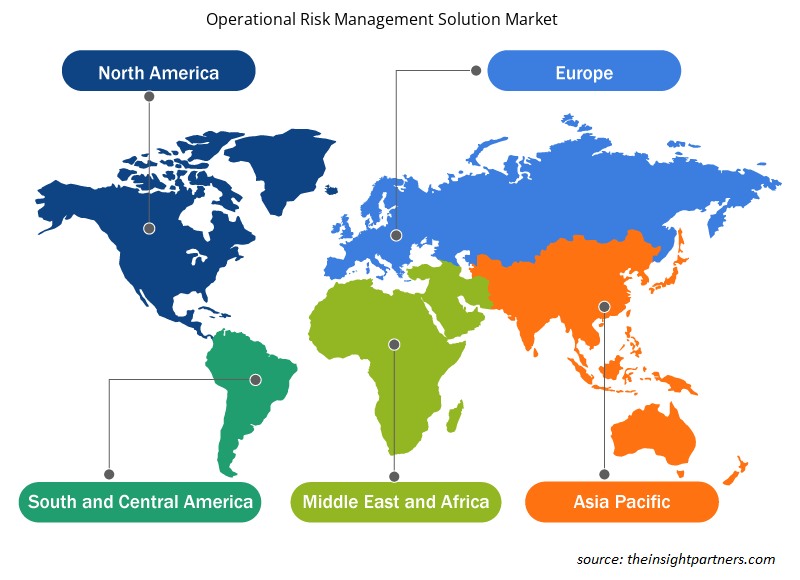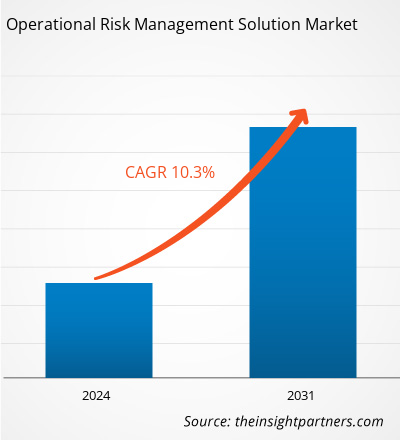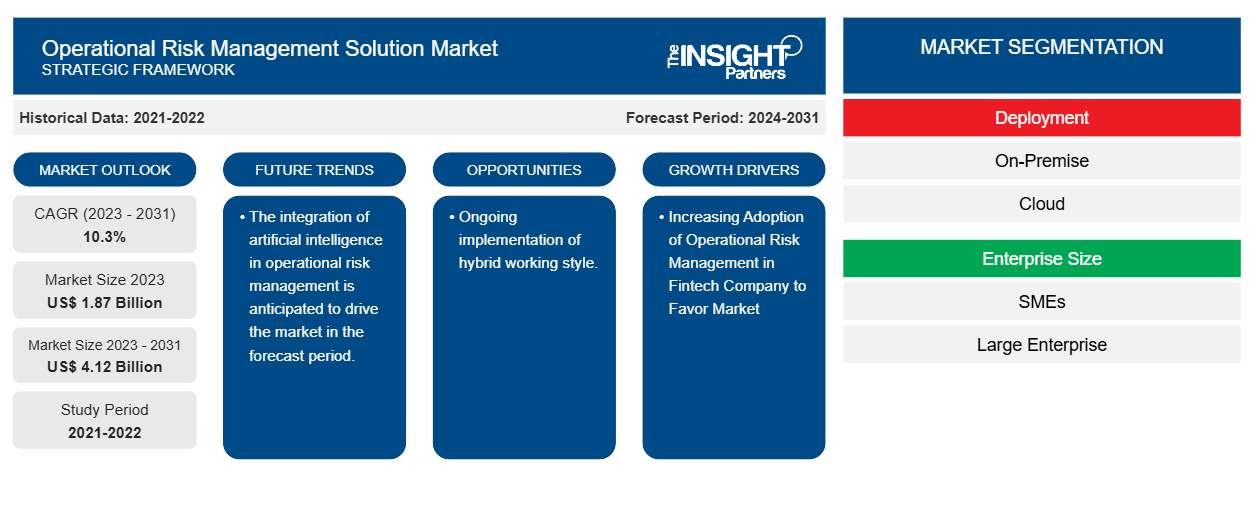運用リスク管理ソリューションの市場規模は、2023 年の 18 億 7,000 万米ドルから 2031 年には 41 億 2,000 万米ドルに達すると予測されています。市場は 2023 年から 2031 年にかけて 10.3% の CAGR を記録すると予想されています。フィンテック企業における運用リスク管理の採用の増加と、さまざまな組織におけるサイバー攻撃の増加は、運用リスク管理ソリューション市場の主要な推進要因およびトレンドとなる可能性があります。
運用リスク管理ソリューション市場分析
運用リスク管理市場は、世界的に大きな成長を遂げています。この成長は、フィンテック企業における運用リスク管理の採用の増加と、さまざまな組織におけるサイバー攻撃の増加に起因しています。さらに、ハイブリッドな作業スタイルの継続的な導入と運用リスク管理における人工知能の統合により、今後数年間で運用リスク管理市場にとって大きなチャンスが生まれることが予想されます。
運用リスク管理ソリューション市場の概要
運用リスク管理 (ORM) は、リスク評価、意思決定、リスク管理の実行を網羅し、このような脅威を適切なレベルまで低減するプロセスです。銀行や金融サービスの運用リスクを含むすべてのセクターと業界を対象とした運用リスク管理は、製造施設の運用リスクとは異なっています。最終的には、組織が潜在的に壊滅的な問題を回避し、事業継続を保証するには、強力な運用リスク管理プロセスが必要です。
要件に合わせてレポートをカスタマイズする
このレポートの一部、国レベルの分析、Excelデータパックなど、あらゆるレポートを無料でカスタマイズできます。また、スタートアップや大学向けのお得なオファーや割引もご利用いただけます。
-
このレポートの主要な市場動向を入手してください。この無料サンプルには、市場動向から見積もりや予測に至るまでのデータ分析が含まれます。
運用リスク管理ソリューション市場の推進要因と機会
フィンテック企業における運用リスク管理の導入拡大が市場を有利に導く
フィンテック企業における運用リスク管理の採用増加は、確かに市場を牽引しています。金融技術と業界は急速に拡大しており、業界内の企業数も増加しています。フィンテック企業は厳しい規制ニーズに直面しています。企業数が増えるにつれて、コンプライアンスと規制の要求が高まります。さらに、フィンテック企業は機密情報を含むさまざまな財務データで構成されており、このデータが侵害される余裕はありません。ここでの運用リスク管理ソリューションは、フィンテック企業のデータ侵害を防止および防止するのに役立ちます。したがって、上記のパラメータを考慮すると、フィンテック企業における運用リスク管理の採用増加は、運用リスク管理ソリューション市場の成長を牽引しています。
ハイブリッドワークスタイルの継続的な導入。
ハイブリッド ワーク スタイルの継続的な導入は、市場にいくつかの機会をもたらすと予想されます。ハイブリッド ワーク環境は複雑なインフラストラクチャに依存しており、リモート ワークの従業員とオフィス ワークの従業員を管理するための強力な IT インフラストラクチャが必要です。さらに、サイバー犯罪はますます巧妙化しており、ハイブリッド ワーク モデルを採用する企業は、データ セキュリティに関する強力な制御によって警戒を維持する必要があります。ハイブリッド ワーク モデルには、サイバー セキュリティの基準緩和、スタッフの保持など、さまざまなリスクがあります。運用リスク管理ソリューションは、これらのリスクの防止策を提供します。したがって、上記のパラメーターを考慮すると、ハイブリッド ワーク スタイルの継続的な導入は、市場にいくつかの機会をもたらすと予想されます。
運用リスク管理ソリューション市場レポートのセグメンテーション分析
運用リスク管理ソリューション市場分析の導出に貢献した主要なセグメントは、展開と企業規模です。
- 運用リスク管理ソリューション市場は、導入に基づいてオンプレミスとクラウドに分かれています。オンプレミスセグメントは、予測期間中に大きな市場シェアを占めると予想されます。
- 企業規模に基づいて、運用リスク管理ソリューション市場は中小企業と大企業に分かれています。予測期間中、中小企業セグメントが大きな市場シェアを占めると予想されます。
地域別運用リスク管理ソリューション市場シェア分析
運用リスク管理ソリューション市場レポートの地理的範囲は、主に北米、アジア太平洋、ヨーロッパ、中東およびアフリカ、南米および中米の 5 つの地域に分かれています。
北米は、オペレーショナル リスク管理ソリューション市場を独占しています。北米市場は、米国、カナダ、メキシコに分かれています。これらの地域では、市場が大幅な成長を遂げています。この成長は、この地域でのハイブリッド ワークプレイス環境の増加に起因しています。北米地域のさまざまな業界でのハイテク採用の傾向が、オペレーショナル リスク管理ソリューション市場の成長を後押ししています。デジタル ツールの採用の増加や政府機関による高額な技術支出などの要因が、北米のオペレーショナル リスク管理ソリューション市場の成長を牽引すると予想されます。
さらに、米国とカナダの先進国では研究開発に重点が置かれているため、北米のプレーヤーは技術的に高度なソリューションを市場に投入せざるを得なくなっています。さらに、米国には、革新的なソリューションの開発にますます重点を置いている運用リスク管理ソリューション市場のプレーヤーが多数存在します。これらすべての要因が、この地域の運用リスク管理ソリューション市場の成長に貢献しています。
運用リスク管理ソリューション市場の地域別分析
予測期間を通じて運用リスク管理ソリューション市場に影響を与える地域的な傾向と要因は、Insight Partners のアナリストによって徹底的に説明されています。このセクションでは、北米、ヨーロッパ、アジア太平洋、中東およびアフリカ、南米および中米にわたる運用リスク管理ソリューション市場のセグメントと地理についても説明します。

- 運用リスク管理ソリューション市場の地域別データを入手
運用リスク管理ソリューション市場レポートの範囲
| レポート属性 | 詳細 |
|---|---|
| 2023年の市場規模 | 18億7千万米ドル |
| 2031年までの市場規模 | 41億2千万米ドル |
| 世界のCAGR(2023年~2031年) | 10.3% |
| 履歴データ | 2021-2022 |
| 予測期間 | 2024-2031 |
| 対象セグメント |
展開別
|
| 対象地域と国 |
北米
|
| 市場リーダーと主要企業プロフィール |
|
運用リスク管理ソリューション市場のプレーヤー密度: ビジネスダイナミクスへの影響を理解する
運用リスク管理ソリューション市場は、消費者の嗜好の変化、技術の進歩、製品の利点に対する認識の高まりなどの要因により、エンドユーザーの需要が高まり、急速に成長しています。需要が高まるにつれて、企業は提供内容を拡大し、消費者のニーズを満たすために革新し、新たなトレンドを活用し、市場の成長をさらに促進しています。
市場プレーヤー密度とは、特定の市場または業界内で活動している企業または会社の分布を指します。これは、特定の市場スペースに、その規模または総市場価値と比較して、どれだけの競合相手 (市場プレーヤー) が存在するかを示します。
運用リスク管理ソリューション市場で事業を展開している主要企業は次のとおりです。
- アダプトITホールディングス株式会社
- メトリックストリーム
- RSA セキュリティ
- TPSCO LLC
- SAP SE
- シェルインターナショナルBV
免責事項:上記の企業は、特定の順序でランク付けされていません。

- 運用リスク管理ソリューション市場のトップキープレーヤーの概要を入手
運用リスク管理ソリューションの市場ニュースと最近の動向
運用リスク管理ソリューション市場は、主要な企業出版物、協会データ、データベースなどの一次調査と二次調査を経て定性的および定量的データを収集することで評価されます。運用リスク管理ソリューション市場におけるいくつかの動向を以下に示します。
- オーストラリア健全性規制庁(APRA)は、健全性基準CPS 230オペレーショナルリスク管理(CPS 230)の最終決定を発表しました。APRAによると、CPS 230は、APRA規制対象事業体のオペレーショナルリスク管理能力と事業中断への対応能力を強化することを目的としています。(出典:APRA企業ウェブサイト、2023年7月)
- タタコンサルタンシーサービス(TCS)は、臨床試験向けに、インテリジェントな意思決定、コンプライアンスの向上、研究の有効性の向上を可能にする、俊敏かつ直感的なリスクベースのモニタリングソリューションを発表しました。(出典:TCS企業ウェブサイト、2022年4月)
運用リスク管理ソリューション市場レポートの対象範囲と成果物
「運用リスク管理ソリューション市場規模と予測(2021〜2031年)」レポートでは、以下の分野をカバーする市場の詳細な分析を提供しています。
- 対象範囲に含まれるすべての主要市場セグメントについて、世界、地域、国レベルでの運用リスク管理ソリューションの市場規模と予測
- 運用リスク管理ソリューションの市場動向、推進要因、制約、主要な機会などの市場動向
- 詳細なPEST/ポーターの5つの力とSWOT分析
- 主要な市場動向、世界および地域の枠組み、主要プレーヤー、規制、最近の市場動向を網羅した運用リスク管理ソリューション市場分析
- 市場集中、ヒートマップ分析、主要プレーヤー、運用リスク管理ソリューション市場の最近の動向を網羅した業界の状況と競争分析
- 詳細な企業プロフィール
- 過去2年間の分析、基準年、CAGRによる予測(7年間)
- PEST分析とSWOT分析
- 市場規模価値/数量 - 世界、地域、国
- 業界と競争環境
- Excel データセット
最新レポート
関連レポート
お客様の声
購入理由
- 情報に基づいた意思決定
- 市場動向の理解
- 競合分析
- 顧客インサイト
- 市場予測
- リスク軽減
- 戦略計画
- 投資の正当性
- 新興市場の特定
- マーケティング戦略の強化
- 業務効率の向上
- 規制動向への対応























 無料サンプルを入手 - オペレーショナルリスク管理ソリューション市場
無料サンプルを入手 - オペレーショナルリスク管理ソリューション市場